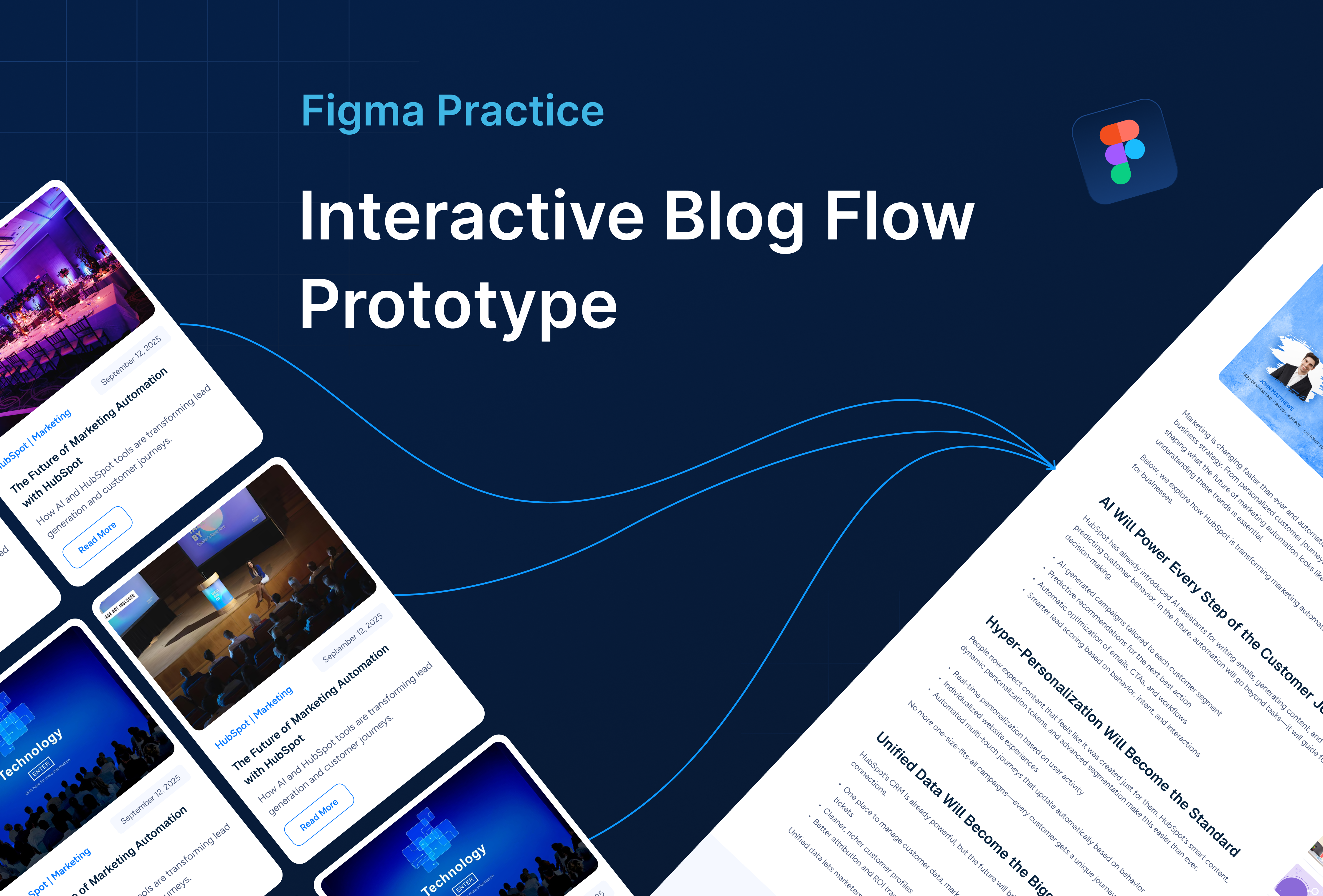2 Minutes Read
Listen to the Blog
Weekly Review: Building a Multi-Page App Prototype in Figma : Recap of the week's lessons with a small project to create a multi-page app prototype.
1:43
Purpose of the Week's Lessons: Briefly introduce the topic, explaining the goal of the week—building a multi-page app prototype in Figma.
Overview: Mention the key lessons and how they tie into the creation of a multi-page prototype.
Project Example:
Provide a simple project for readers to follow along:
- Step 1: Define Pages: Choose a simple app (e.g., a recipe app or a to-do list).
- Step 2: Design Key Screens: Include essential screens like Home, Settings, and Details.
- Step 3: Link the Pages: Explain how to add interactions that navigate between these screens.
Lesson Recap
Break down the week's lessons into manageable sections:
- Day 1: Setting Up the Project: Discuss how to start by defining the project, wireframes, and setting up pages in Figma.

- Day 2: Designing Screens: Recap how to design individual screens and user interfaces for different app sections.

- Day 3: Adding Interactions: Cover the basics of adding transitions and interactions between pages.

- Day 4: Components & Reusable Elements: Summarize lessons on using components for consistency across pages.

- Day 5: Prototyping & User Flows: Explain how to connect the pages to create a seamless prototype and show user flows.

Best Practices
- Consistency: Emphasize the importance of maintaining design consistency across pages.
- User Experience: Focus on creating smooth transitions and a user-friendly flow.
- Prototyping Tips: Share tips on using Figma's prototyping features, like interactions and animations.
Conclusion
- Next Steps: Suggest what users can do next to improve their prototyping skills.
- Call to Action: Encourage them to share their projects or leave comments/questions.








%201.png?width=1016&height=912&name=image%20(54)%201.png)